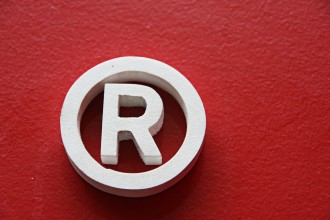
December 9, 2017
The Marking Requirement is Alive and Well; Don’t Forget about Virtual Marking
The Federal Circuit recently faced a patent marking issue in Arctic Cat Inc. v. Bombardier Recreational Products Inc., [2017-1475] (December 8, 2017). In that case, the patent owner Arctic Cat had previously licensed the patents in suit to Honda. The license agreement with Honda specifically stated that Honda “shall have no obligation or requirement to mark” its licensed products. While this provision no doubt made sense to Arctic Cat at the time, it put at risk the damage award against accused infringer Bombardier for the period of time before Arctic Cat received actual notice of infringement.
The Federal Circuit held that an alleged infringer who challenges the patentee’s compliance with § 287 bears an initial burden of production to articulate the products it believes are unmarked “patented articles” subject to § 287. Once the alleged infringer meets its burden of production, however, the patentee bears the burden to prove the products identified do not practice the patented invention.
Compliance with the patent marking statute can be difficult because the patent owner may have to change the molds or other equipment used in manufacture as the patent issues, and again as the patents expire or are invalidated (lest the patent owner be accused of false marking). This obligation also extends to the patent owner’s licensees, but it is easy to understand why a licensee, such as Honda in this case, would not want to be bothered with marking.
Many patent owners, however, appear to be unaware that the AIA made it easier for patent owners (and their licensees) to comply with the patent marking requirement. While it could not have helped Arctic Cat and its licensee Honda in their pre-AIA license, amended §287(a) now allows the patentee to mark by “fixing thereon the word “patent” or the abbreviation “pat.” together with an address of a posting on the Internet, accessible to the public without charge for accessing the address, that associates the patented article with the number of the patent.” Thus, when patents issue or expire, a patent owner simply has to update a website, not change molds or printing plates.
A Report to Congress on virtual marking in 2014 concluded that “virtual marking has likely met its intended objectives of reducing manufacturing costs and facilitating public notice in certain situations.” This assessment was probably correct, but virtual marking remains under-utilized. Among virtual markers, some provide online lists:
TIVO: www.tivo.com/patents
Nanoleaf: http://nanoleaf.me/
Densify: http://www.densify.com/company/virtual-patent-marking.htm
Arthrex: www.arthrex.com/corporate/virtual-patent-marking
Hill-Rom: http://www2.hill-rom.com/usa/PDF/Patent_20120609.pdf
Actifio: https://www.actifio.com/patents/
St. Jude Medical: https://www.sjm.com/en/legal-notices-patents/patents
Some provide a downloadable list:
Bunn: www.bunn.com/patents
And some provide lists for individual products:
Kimberly Clark www.kimberly-clark.com/patents
Virtual patent marking is one of the few benefits of the AIA, but inventors and their assignees do not appear to be taking advantage of it.




































